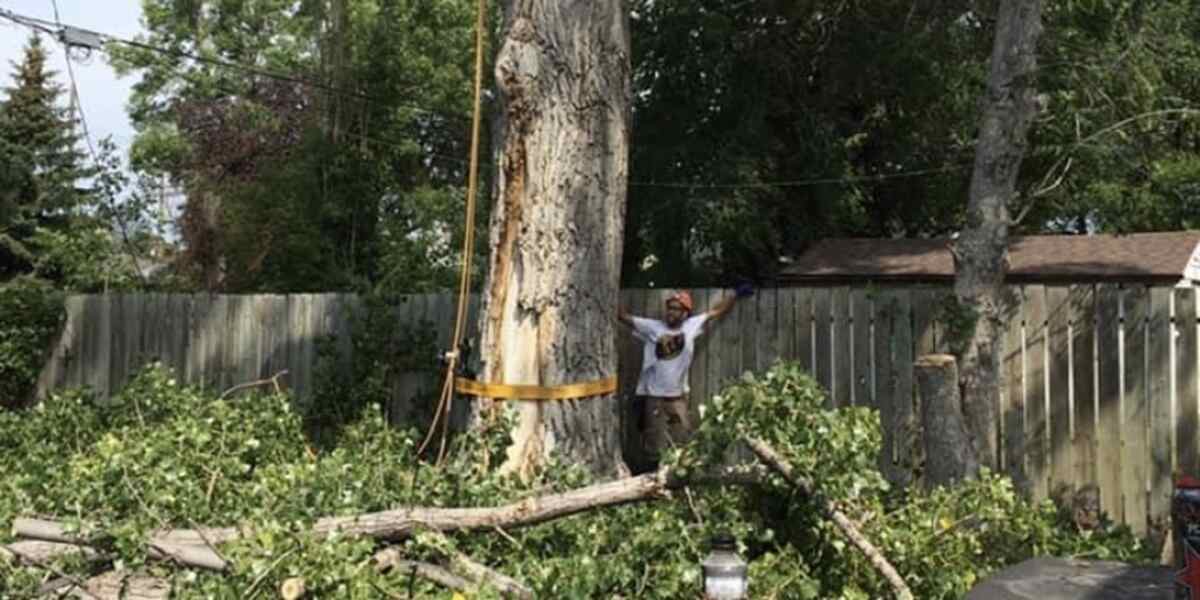
If you are a property owner, you are probably familiar with stress cracks. You’ve more than likely seen them on your driveway or basement walls.
What you might not know is that stress cracks can occur on trees as well. These bark cracks usually mean that there’s something wrong with the tree.
In this post, we look at why they develop and how you can address stress cracks in trees.
What Causes Stress Cracks in Trees?
Any tree can develop stress cracks, but they tend to be especially common in young, thin-barked trees. Though these cracks can occur due to various reasons, here are some of the common causes.
Cold Temperatures
Your tree’s trunk might seem hard and dry, but its inside is full of water. When temperatures drop, this water freezes and expands. As it expands, it pushes against the tree’s bark, creating frost cracks.
Sudden Irrigation Changes
When your tree experiences a prolonged period of drought, its bark can become drier and more brittle. If this is suddenly followed by lots of irrigation, your tree could undergo a growth spurt.
In the end, the growing tissue and high water pressure will push against the brittle bark. This will cause stress cracks to form.
Extreme Weather
Sometimes, stress cracks in trees occur due to extreme weather. For instance, your tree could develop this type of damage after being struck by lightning.
Excessive Pruning
Pruning goes a long way in keeping your tree healthy and beautiful. However, excessive pruning can be harmful.
If you prune your tree excessively during a hot, dry summer, your tree will experience sunburn. This will cause stress cracks to form either on the southern or southwestern side of the tree.
How to Resolve Stress Cracks
Stress cracks might not seem like an issue, but this is far from true. These cracks often provide pests and diseases an entry into the tree.
If your tree is healthy, it can compartmentalize these wounds. Unfortunately, stressed trees that have deep cracks will need more attention. Without it, you could end up having to reach out to Winnipeg’s trusted tree removal professionals.
Here are some of the measures you can implement to address stress cracks.
Bark Trace
With a clean, sharp tool, cut along the crack to remove loose and jagged bark. This procedure will help the tree close the crack smoothly. It also discourages pests and pathogens from attacking the tree.
Keep Your Tree Healthy
The healthier your tree is, the more likely it is to recover. Consider mulching and irrigating the tree as much as possible.
Preventing Stress Cracks
Prevention is always better than cure. Though the measures we’ve shared above can help, stress cracks can leave your tree extremely vulnerable. As such, it’s always best to try to prevent their occurrence.
Keep your trees safe from stress cracks by:
- Insulating the bark with tree wraps in summer and winter
- Regularly and properly irrigating your trees
- Minimizing the use of herbicides with wetting agents
- Not over-pruning the trees
- Not fertilizing in summer or early fall
Professional Tree Care in Winnipeg, MB
Stress cracks in trees are quite common. However, you should never take them lightly. What starts out as a small crack could lead to pest infestations and deadly tree diseases.
Have you noticed cracks on your tree’s bark? Would you like to know what to do about them? We can help.
From providing personalized solutions to teaching you how to know if a tree is dead, you can count on us for all your tree care needs.
Call Mitchel’s All Season Tree Experts today at (204) 998-4559 or (204) 990-8070 to request your free estimate.
